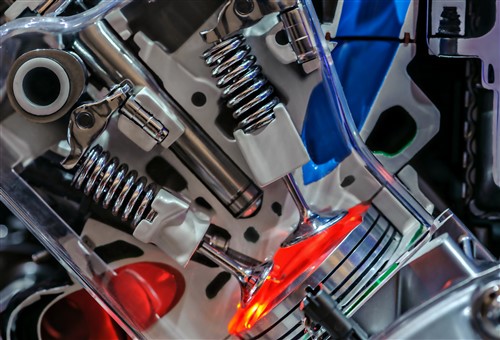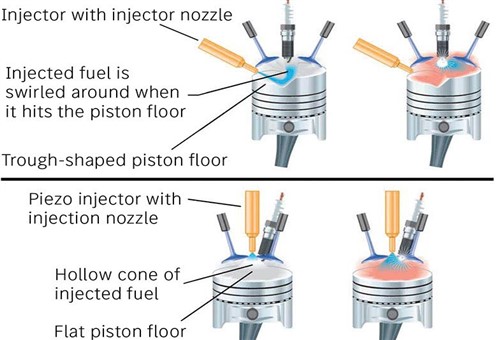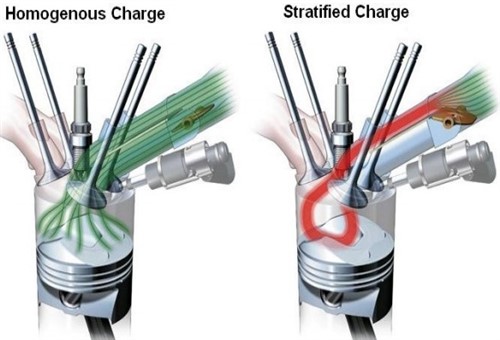
Contrary to popular belief, direct fuel injection is not a new invention. The fact is that Mercedes-Benz introduced the first successful implementation of direct (petrol) fuel injection on the iconic 1954 300SL Gullwing and direct diesel injection on the OM138 engine as long ago as 1936.
While these were groundbreaking technologies for their time(s), direct injection technology has come a very long way since then. In fact, Mercedes-Benz has taken direct petrol injection technology to the proverbial next level in terms of sophistication, efficiency, and control in recent years. This is hardly surprising, given that Mercedes-Benz holds 2,397 patents in the area of engine design and 1,553 patents in the area of engine control systems. However, this article is not about the number of patents Mercedes-Benz holds; this article is about how direct petrol injection systems on modern Mercedes-Benz vehicles work, and you will no doubt not be surprised to learn that direct petrol injection systems on Mercedes-Benz vehicles are significantly more complicated than similar systems on lesser vehicle brands. Thus, in Part 1 of this two-part article, we will discuss the basic operating principles of direct petrol injection on modern Mercedes-Benz vehicles, as well as some things to look out for (and to be careful of) when servicing modern Mercedes-Benz vehicles. Before we get to specifics, though, let us take a step back and look at-
We need not rehash the differences between single-point injection, multi-point injection and sequential injection here since every reasonably competent mechanic should understand the technical and operational differences between these technologies. However, two terms we often come across when dealing with Mercedes-Benz direct petrol injection systems are a) homogenous charge and b) stratified charge, both of which refer to different ways the injected fuel mixes with the intake air. We will discuss these terms in some detail later on, but for now, let us take a brief history lesson-
Mercedes-Benz presented the first petrol engine with piezoelectric direct injection and spray-guided combustion at the 2005 Frankfurt Auto Show. The vehicle was a mild hybrid, and the all-new 3.5L six-cylinder engine produced 215 kW and a 10 per cent reduction in fuel consumption compared to its comparable predecessor. This engine entered the European market in the CLS 350 CGI in 2006, although this model could not be released in the US market because it could not meet US emissions regulations.
By 2012, Mercedes-Benz had developed homogenous charge direct injection systems ( as opposed to stratified charge systems) for all-new inline-four cylinder and V6 engines that both produced more torque while using less fuel than their immediate predecessors, and both engines met the emissions regulations in force in the US market at the time. All of the above is impressive, given that an increase in torque typically comes with a fuel consumption penalty.
While the above may be mildly interesting to some readers, the point of the above is that the efficiency of direct petrol injection systems on modern Mercedes-Benz vehicles is built on the solid technological foundations of the 2005 and 2012 direct petrol injection systems described above. One result of this is the fact that modern Mercedes-Benz petrol injection systems are not entirely new to many of us since much of the evolution of the new stratified charge systems can be traced back to the D-, L- and K-Jetronic, CIS, CIS-E, KE, and LU injection systems used previously by Mercedes-Benz.
Most of the injection systems listed above were based on homogenous charge technology, and while all of the above systems were the products of a severe lack of sufficient computing power, modern stratified charge petrol injection systems are controlled by highly sophisticated and advanced microprocessors that can perform several hundreds of millions of calculations per second, which begs the question of-
We need not spend too much time on this question but suffice it to say that in the context of air/fuel mixtures, the word "homogenous" means that the fuel droplets in the cylinder after injection and before combustion occurs are (almost) evenly distributed throughout the air charge. Moreover, since homogenous charge injection occurs well before the pistons reach TDC, the compression of the air/fuel mixture forces a significant portion of the mixture into a position close to the spark plug electrode. When ignition of the air/fuel mixture begins, this portion of the mixture ignites first, and the combustion flame then propagates outward from this point to ignite the rest of the air/fuel mixture.
While homogenous charge injection is reasonably efficient, its efficiency can be reduced by factors that influence how the intake air enters the cylinders. For instance, since homogenous charge injection depends on a certain amount of swirl for the air to mix with the fuel cloud, things like carbon build-up on the intake valves can disrupt the flow dynamics of the intake air, which could lead to a condition where the fuel concentrates into several fuel-rich areas in the cylinders. As might be expected, this condition leads to uneven, poor combustion and reduced engine performance, but let us look at-
Stratified injection systems
By way of contrast, the stratified charge systems now in use on modern Mercedes-Benz engines use multiple injection events to produce a condition in which the air/fuel mixture is richer near the combustion chamber than it is lower down in the cylinder. Put differently, this means that just before ignition occurs, the air/fuel mixture is stratified or separated into two distinct layers, with the richer layer being near the combustion chamber and the leaner mixture being "squeezed" between the rich layer and the piston crown.
In practice, stratified injection begins when the air in the cylinder is almost fully compressed, but still well before the compression pressure reaches its peak. As the piston continues upward on the compression stroke, a final injection event occurs less than one degree of crankshaft rotation before the compression pressure reaches its peak and the ignition spark is delivered. Consider the graphic below-

Image source: https://automotivetechinfo.com/wp-content/uploads/2023/01/spray-guided-fuel-injection-directs-fuel.jpg
The top graphic illustrates the mechanics of wall-guided injection, during which the fuel is sprayed into the cylinder at an angle as shown. In this arrangement, the injected fuel is forced to follow a depression in the piston crown to the most efficient part of the combustion chamber where it forms a homogenous mixture with the intake air. Ignition starts at the tip of the spark plug, and the combustion flame propagates outwards from the point of ignition.
In contrast, the bottom graphic illustrates the mechanics of spray-guided injection, which is the basis of direct petrol injection on modern Mercedes-Benz injection systems. In this arrangement, the fuel is sprayed vertically down into the cylinder to hit the piton crown but the most noteworthy aspect of this design is the relationship(s) between the distance from the centre of the spray nozzle to the midpoint between the valves, and the orientation of the spark plug electrode. We will discuss the importance of proper spark plug orientation or indexing in Part 2 of this article, but for now, let us look at-

Image source: https://img.brainkart.com/article/article-Stratified-Charge-En-hdo.jpg
In lesser engines, the fuel management system attempts to maintain a stoichiometric air/fuel mixture so that when combustion occurs, all the fuel combusts using all the available air.
However, with spray-guided stratified injection, such as in modern Mercedes-Benz injection systems, the last injection event (that occurs before ignition of the mixture begins) forms a hollow cone-shaped cloud of fuel that is significantly richer than the mixture below it. Thus, when ignition occurs, this fuel-rich, cone-shaped fuel cloud ignites almost instantly and serves as a much hotter (and larger) ignition source than the small flame kernel a spark plug produces. So, in practice, it ignites the leaner air/fuel mixture below it over a large area much more efficiently than a spark plug could.
As a practical matter, the lower layer of the air/fuel mixture is so lean that it will not ignite without the enormous heat energy input provided by the ignition of the top layer of the air/fuel mixture.
Essentially, spray-guided injection produces two distinctly separate combustion events, which have two primary effects. The first is that combustion is much more uniform and complete than other spray patterns, and the second is that the combustion process does not consume all the available air. Nonetheless, air that is not consumed during the combustion process expands violently during combustion, which assists in forcing the piston downward on the power stroke.
The physics and chemical processes that allow excess air to exist in engine cylinders during and after combustion in modern Mercedes-Benz spray-guided petrol injection systems are exceedingly complex and fall outside the scope of this article, but suffice it to say that the volume of excess air varies as engine operating conditions change. As a result of this, it might sometimes look like fuel trim values on these injection systems are erratic or excessive at times or under some operating conditions when they are, in fact, perfectly normal. Put differently, this means that we should never attempt to diagnose any fuel injection-related issues on modern Mercedes-Benz vehicles without referring to relevant freeze frame data and OEM-level service/repair information, which leaves us with-
In Part 2 of this article, we will discuss the crucial importance of spark plug indexing on modern Mercedes-Benz engines and the inner workings of the piezoelectric fuel injectors that make the efficiency of spray-guided injection systems on modern Mercedes-Benz engines possible.